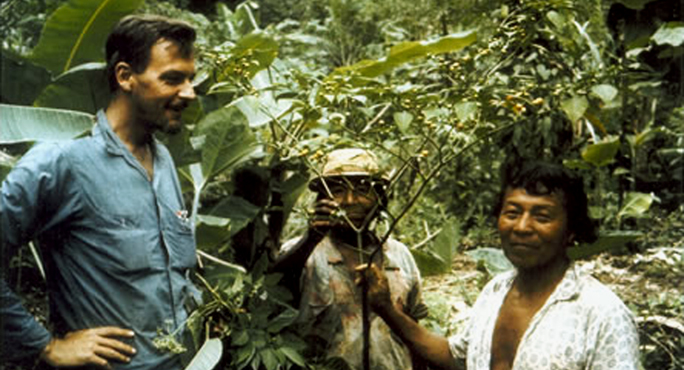Photo By
Dr. Duke in Panama With Choco Indians, circa 1966. Photo courtesy Dr. James Duke
The world is fed mainly by a dozen plant species, and most agricultural countries have specialists for their country’s major crops. The world also has thousands of minor economic species, which potentially are as important ecologically and economically as the big dozen.
There is an overwhelming number of climatological, pedological, anthropological, latitudinal, and biological variables associated with these minor species. The Economic Botany Laboratory of the USDA gathered data on these potentially economically useful species.
In 1971, USDA asked me to develop an information system on potential alternative crops for narcotics. With no computers available, I set up a manual information retrieval system of transparencies for screening 1,000 economic plants as potential substitutes. In 1972, I was encouraged to abandon the transparencies for computers.
Ten years later, the computer bill for 1981 was over $50,000. With the loss of support from the National Cancer Institute, we could no longer afford to keep the databases online for a time.
One of our most productive activities was mailing over 1,000 questionnaires worldwide to scientists and extension people, intentionally emphasizing developing countries. Within 2 years, more than 500 people had responded, sending published and unpublished ecosystematic data on economic plants and some weeds and nitrogen-fixing species.
For a brief period, funding was available to promote one subset of the file, the Phytomass File. Department of Energy support for that file has been discontinued. Data from the Phytomass File support our early contention that C4 grasses are roughly twice as productive as C3 grasses, which are in turn roughly twice as productive as legumes. Availability of this kind of information could save countless hours and dollars in screening projects where maximum biomass production is a priority.
- From Dr. James Duke’s Phytochemical & Ethnobotanical Databases


